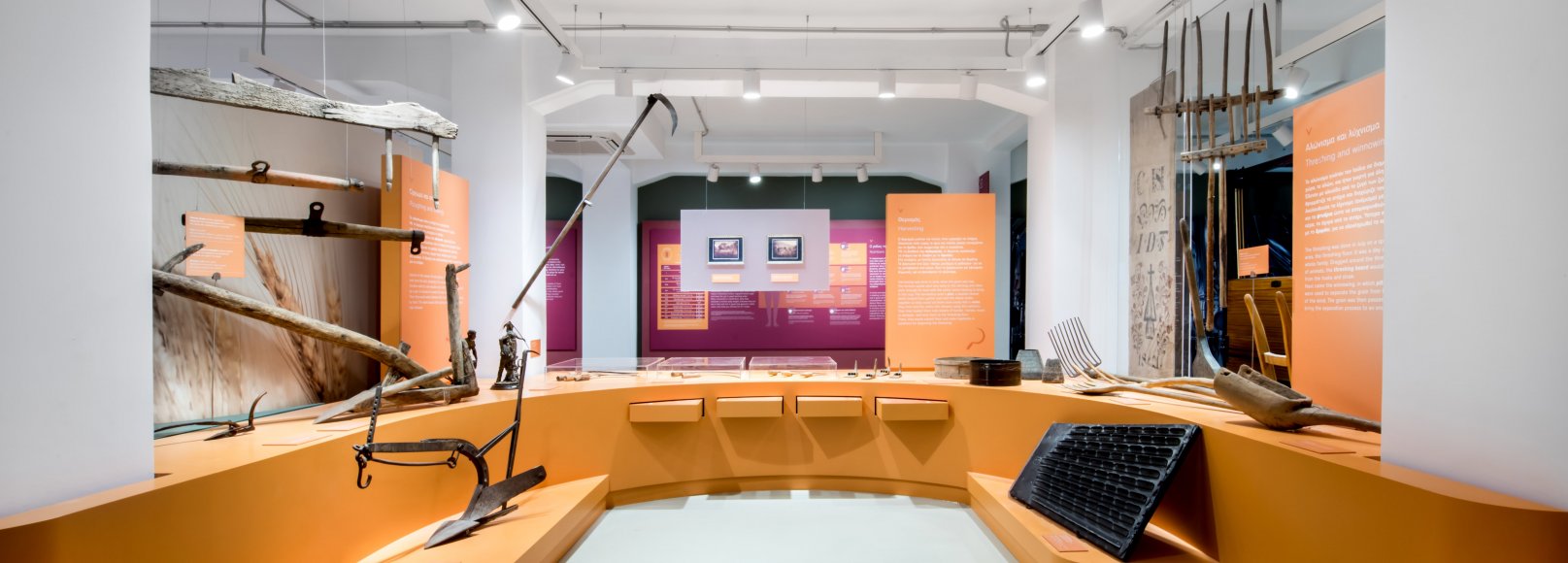Ploughing and sowing
Autumn is the season for ploughing. Ploughing aerates and turns the soil, allowing it to receive the seed. Farmers used to use wooden and later metal ploughs pulled by a pair of animals to create furrows in their fields. Then they would walk between the furrows, sowing the seeds by hand. The seeds would then spring into life with the rains that followed.
Harvesting
Harvesting was done in June, when the grain was ripe. The farmers would start very early in the morning and often work through till dusk with the entire family helping to bring in the crop. The harvesters used a pick, a wooden device which helped them gather and hold the wheat stalks together so they could cut them more easily with a sickle. They then tied the stalks into sheaves using thin switches. Then they loaded them onto beasts of burden –horses, mules or donkeys– and took them to the threshing floor. There, they would unload them and make haystacks in readiness for beginning the threshing.
Threshing and winnowing
The threshing was done in July on a specially-prepared flat area, the threshing floor; it was a day of celebration for the whole family. Dragged around the threshing floor by the pair of animals, the threshing board would separate the grain from the husks and straw. Next came the winnowing, in which pitchforks and shovels were used to separate the grain from the chaff with the help of the wind. The grain was then passed through a sieve to bring the separation process to an end.
Thousands of years ago, man simply gathered what grew naturally. Having discovered cereals and realized they could be cultivated, people began to use them as their staple food but also as a means of domesticating and breeding animals, which in turn helped them perform their agricultural tasks. For centuries, these tasks remained the same, until the industrial revolution introduced machines into the production process, improving both working conditions and crop yields. Today, the technological revolution has given rise to Precision Agriculture.
Precision Agriculture
Precision Agriculture is a way of farming which uses technology to process particular information with a view to maximizing a crop's yield while simultaneously minimizing the environmental impact of cultivation. Precision Agriculture uses satellites, geographical information systems, GPS and sensors to document the conditions in a field with absolute precision at every phase in a crop's cultivation. This data is used to improve production and protect the environment. The system also allows the remote control and command of the appropriate tasks to be performed. Information on the soil's water and fertilizer requirements, the current state of the crops and their needs are recorded and processed in real time, allowing:
› A reduction of up to 30% in water consumption
› A reduction of up to 60% in the use of fertilizers and herbicides
› A reduction in energy consumption
› A reduction in production costs
› An increase in productivity
› An improvement in product quality
› A more rational use of chemicals.


